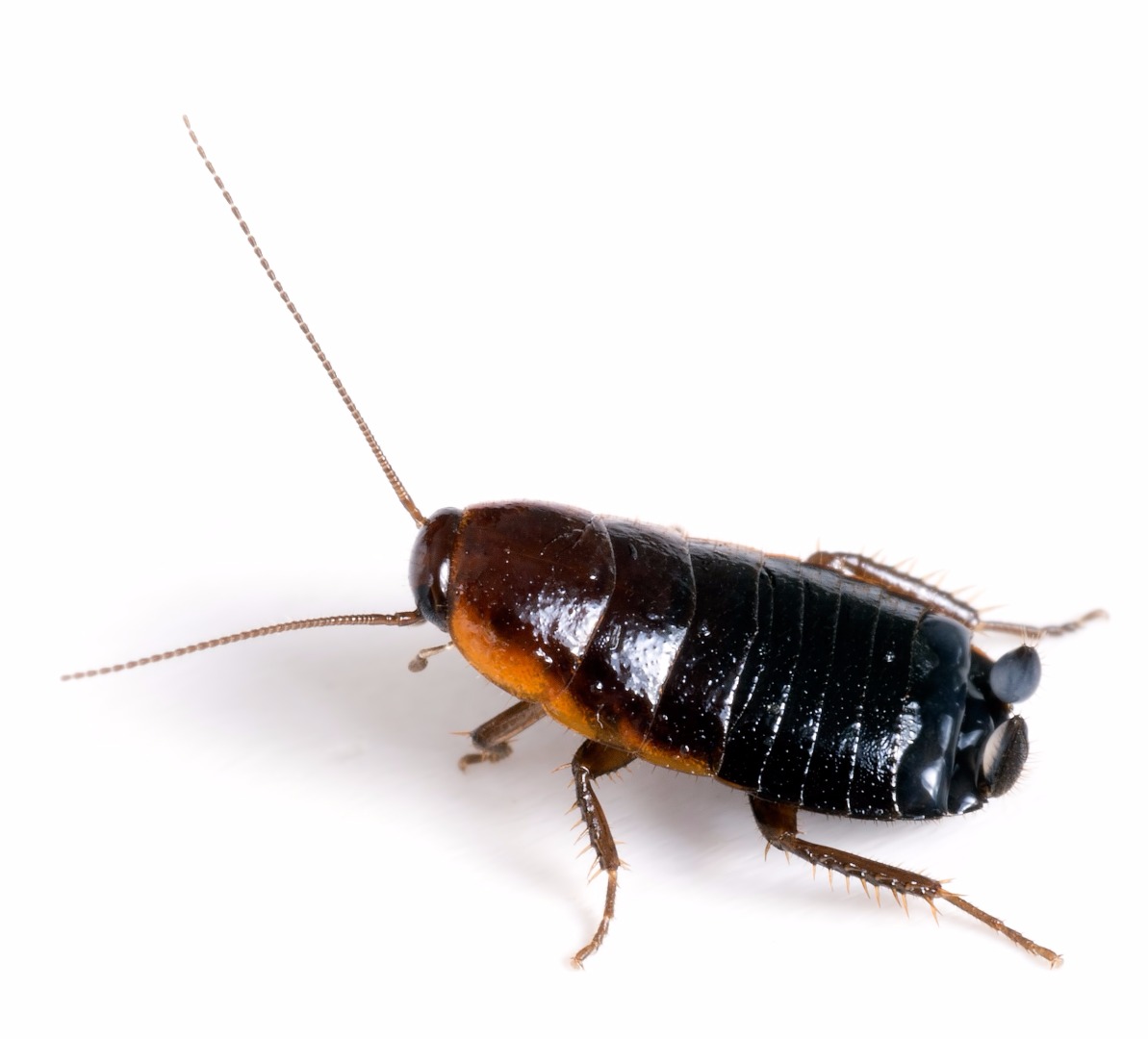Oriental cockroach
(Blatta orientalis)
Though it cannot survive in hot, arid conditions, the Oriental cockroach is commonplace in warm climates. This insect has a high nuisance factor and can often be found in areas of human activity – especially in heated areas, such as hotels, offices, apartment complexes and restaurants. Whilst they have been known to transmit pathogenic bacteria, this insect is most notorious for its fouling and tainting of food and non-food products (such as medical supplies). The faecal matter has a noticeable and distinctive ‘sour’ smell.
Life cycle:
Egg, nymph, adult
| Egg | The female Oriental cockroach typically lays around 5 eggs. Dark-brown in colour, these eggs hatch up to 16 nymphs within a few weeks. |
| Nymph | The nymphs take the appearance of small adults and go through several skin moults. During later stages of development, they form delicate wings and require frequent access to fresh water. |
| Adult | Measuring between 17-30 mm, the adult Oriental cockroach is distinctive due to its dark-brown to black appearance, leathery wings and flexible, elongated antennae. On average, this insect takes around 6 to 18 weeks to develop from an egg into an adult. It can live for up to six months. |
Habitat
Primarily nocturnal, the Oriental cockroach is frequently found in areas of high human concentration – buildings and dwellings with heated interiors being especially attractive to this insect. They are often found in hotels, restaurants, living areas and offices – under tiles and embedded within crevices.








